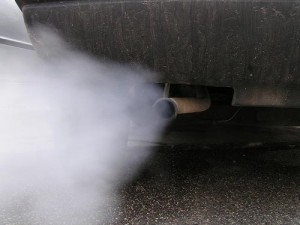
CA Rules Would Limit CO2
It is being reported that on Monday President Obama will pledge a quick review of the Bush Administration’s decision last March to deny California’s request for a Clean Air Act waiver that would enable the state to put in place its stringent greenhouse gas emissions standards for cars and light trucks.
On the day after the inauguration, California Gov. Arnold Schwarzenegger wrote Obama with such a request, backing a parallel letter from the head of the state’s air resources board to incoming EPA administrator Lisa Jackson.
Mr. Obama ran on “change” and the expected announcements appear aimed at making it clear that his administration is serious in that regard. Although it may take some time for EPA to formally review and reconsider California’s waiver request, granting it would deliver on one of Obama’s campaign pledges. It would also represent a tangible step toward stronger climate regulation, one that the incoming administration can take on its own, without waiting for Congressional action.
Automakers have continued to strongly protest California’s stronger standards, arguing that a single, federal program regulating automobile CO2 emissions is much less costly. They point to Corporate Average Fuel Economy (CAFE) standards as the preferred approach.
The state of California, along with environmentalists, assert that the stronger standards are both feasible and cost-effective, and would result in greater emissions reductions that those from CAFE standards. (This writer testified in favor of the California standards when they were up for approval before the state’s Air Resources Board in September 2004.)
The new administration has also said it will move quickly to finalize new rules setting CAFE standards for cars and light trucks through 2015. A draft rule developed by the Bush Administration had been all but finalized in early December when the GM and Chrysler bailout pleas reached Washington. At that point, the Bush team put the rule on old, leaving it to be finalized by the Obama team.
Under the Bush Administration’s May 2008 CAFE proposal, the combined car and truck fleet would be required to meet an expected average of 31.6 mpg by 2015. The final rule is not yet public, but was rumored to be slightly stronger. In comparison, California’s standards — which are specified in terms of grams per mile of CO2-equivalent greenhouse gas emissions — call for a roughly 6% greater reduction but one year later, by 2016.
California’s standards have been adopted by 13 other states, mainly on the east and west coasts, and were originally first slated to take effect in model year 2009. That is to say, right now. However, the 2009 levels required by the California program are on average little different than the equivalent CAFE levels projected for 2009. The differences grow as time goes on and, if California retains its standard-setting authority, the state is likely to set 2020 standards significantly stronger than the levels implied by the Congressionally mandated CAFE target of 35 mpg for that year.
For automakers, another key difference is in the structure of the standards. The CAFE program’s size adjusted approach is relatively easier on full-line automakers such as the Detroit Three (although Toyota’s fleet composition isn’t that far off). The California program has separate standards for cars and light trucks, but the requisite emissions levels are not size adjusted.
Although this saga is far from over, the latest developments confirm both quickly the new administration wants to put its stamp on environmental policy. And it also confirms how automakers will continue to be a prime target for policy makers’ efforts to transform energy use in America.
